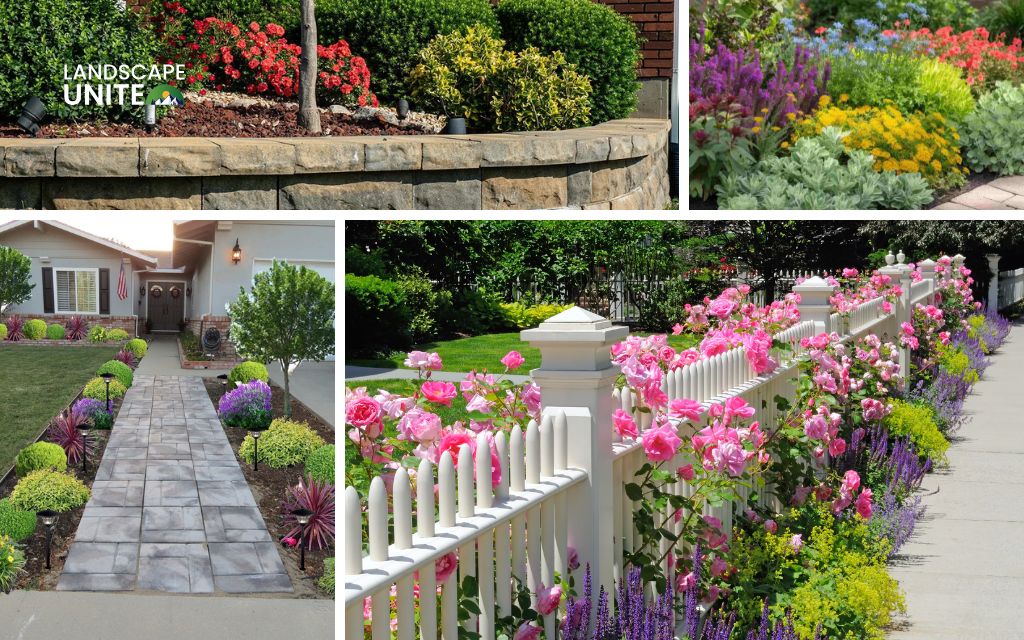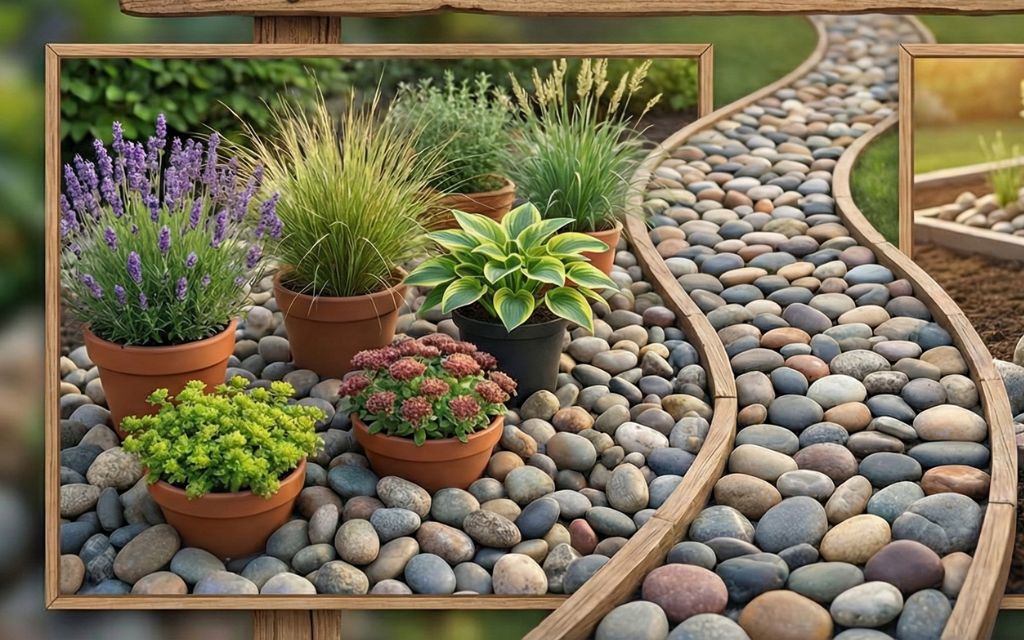How to keep chickens out of flower beds? Effective protection strategies include installing barriers such as decorative fencing or lightweight netting around vulnerable areas, selecting flower varieties that naturally repel chickens, and establishing zones where your flock can freely express their scratching instincts.
Additional deterrent options range from scattering spicy seasonings like cayenne pepper around bed perimeters to applying commercial predator scents that encourage chickens to seek entertainment elsewhere.
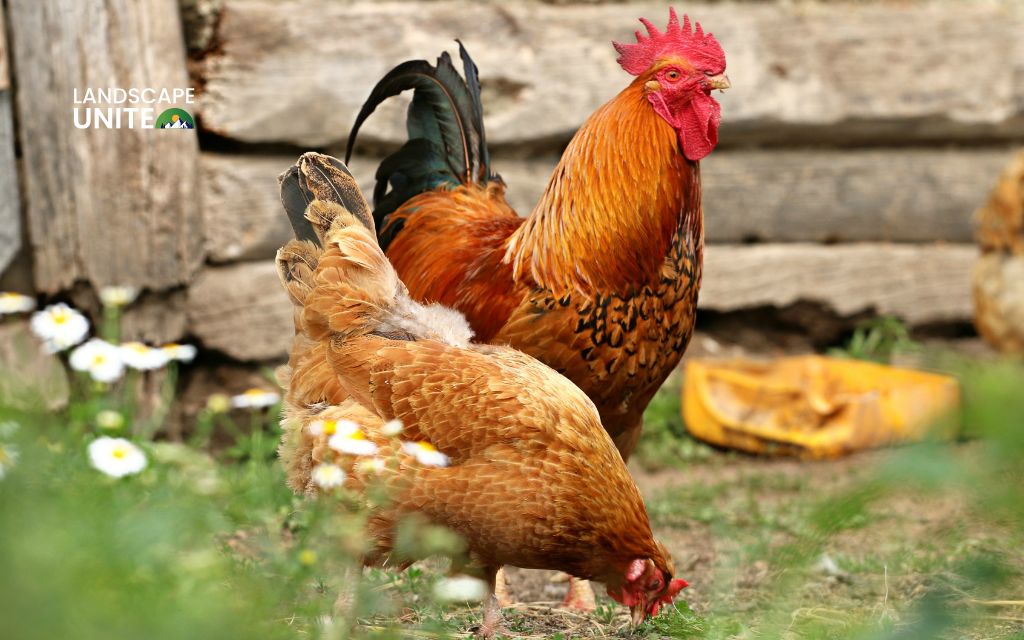
Here are some other helpful guides:
- 8 simple ways to keep cats out of your flower beds for good
- Grubs ruining your flower beds? Here’s how to get rid of them fast
- Getting rid of grass from flower beds forever with these 4 simple steps
- 10 pot-in-flower-bed ideas that instantly upgrade your garden
- How much will flower bed landscaping set you back in 2025?
How to keep chickens out of flower beds
When you need immediate protection for your flower beds, these tried-and-true methods deliver fast results without requiring major garden renovations.
1. Install chicken fencing or garden netting
Physical barriers remain the most reliable first line of defense against determined chickens.
Lightweight chicken wire or specialized garden netting creates an immediate boundary that chickens simply cannot cross.
The barrier prevents chickens from accessing the soil surface where they love to scratch and dig. Choose fencing with openings between 1-2 inches to prevent even smaller chickens from squeezing through gaps.
Secure the fencing at least 6 inches into the ground to prevent chickens from digging underneath. For flower beds along walkways, consider decorative chicken wire that complements your garden’s aesthetic rather than detracting from it.
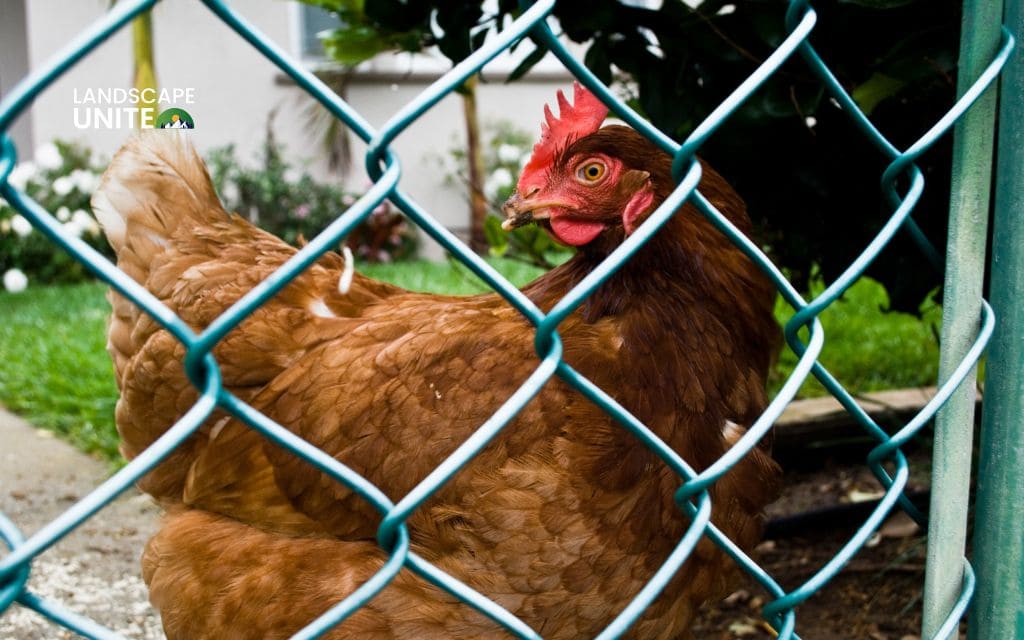
2. Use citrus peels or strong spices
Chickens have strong preferences when it comes to scents and textures, making natural repellents an effective and environmentally friendly deterrent option.
For immediate results, scatter fresh orange or lemon peels around flower beds. Chickens dislike citrus scents, and peels decompose naturally into the soil.
Alternatively, sprinkle paprika or cayenne pepper around bed edges. Reapply after rain and avoid areas where pets spend time.
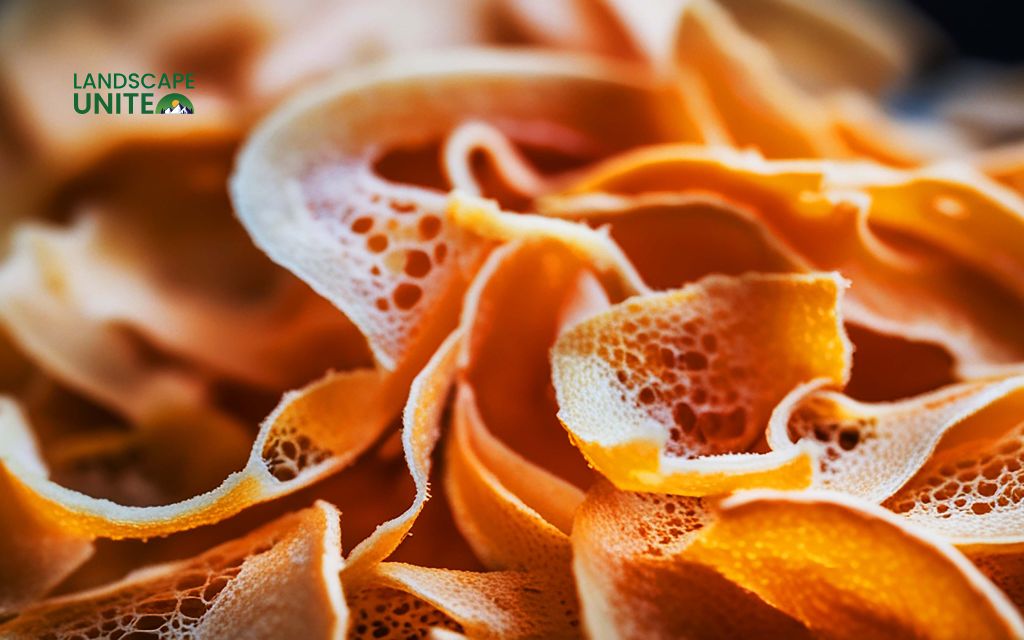
3. Plant herbs or dense “hedges” as natural barriers
Create living fences with strongly scented herbs like rosemary, lavender, lemon balm, and mint. For more substantial barriers, plant dense border plants like boxwood, salvia, or yarrow close together.
Chickens avoid walking through thick, aromatic vegetation, making this both functional and beautiful.

4. Keep sensitive plants in planters or raised beds
Building raised flower beds serves multiple purposes in chicken-friendly gardens, providing both physical protection and improved growing conditions for your plants.
- Elevate your most precious plants in containers 18 inches or higher off the ground. Chickens typically can’t access elevated planters, making this method foolproof for delicate flowers, herbs, and seedlings.
- Use materials like cedar, composite lumber, or stone that will withstand weather and chicken pecking. Ensure the sides are smooth to prevent chickens from using them as perches to access the beds from above.
- Use decorative pots, wooden planter boxes, or raised bed systems that also provide better drainage and easier maintenance.
Want some creative raised bed flower bed inspiration? Don’t miss this post.
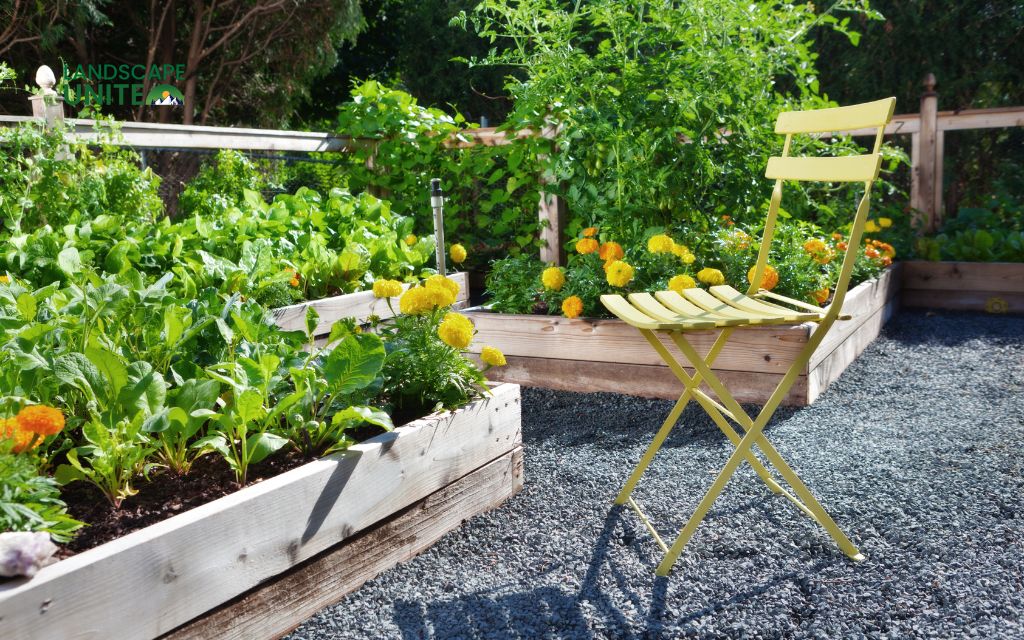
5. Design dedicated chicken areas
Build enclosures with 4 – 6 foot fencing to contain even the most athletic breeds. Include varied terrain with both sunny and shaded areas, multiple perching options, and dust bath zones filled with fine sand or dirt.
Plant chicken-safe vegetation like clover, chickweed, and grass inside the run.
Add logs, stumps, or other natural obstacles that encourage exploration and provide entertainment. Multiple feed and water stations prevent overcrowding during meal times.
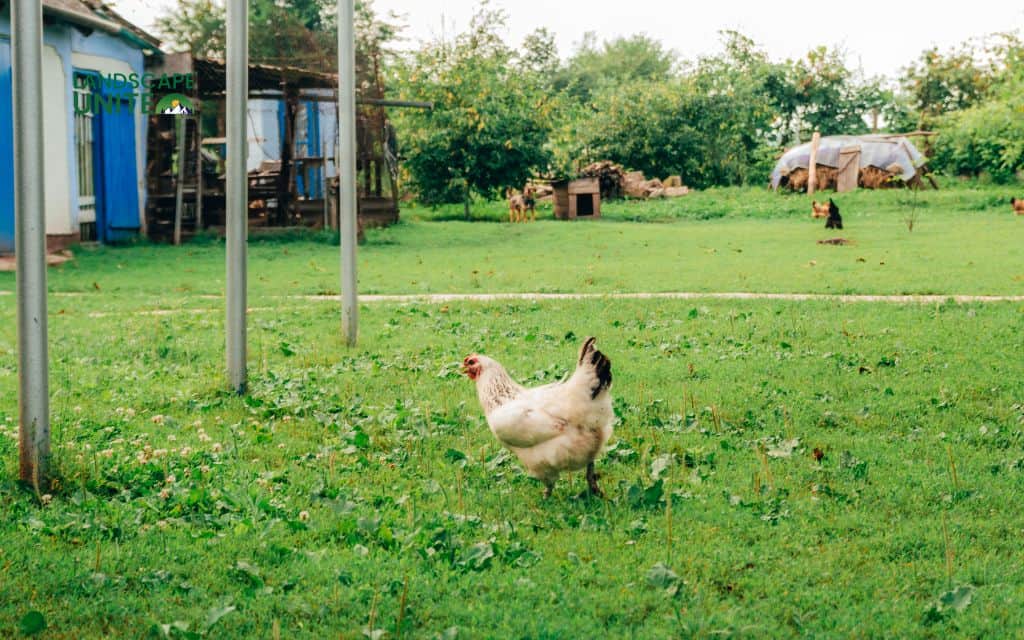
6. Install strategic garden edging
Well-designed garden edging serves as both a physical barrier and a visual cue that helps establish clear boundaries in your landscape.
- Choose edging materials based on your garden’s style and your chickens’ persistence.
- Stone or brick edging provides substantial barriers that complement formal gardens, while wooden timbers work well in rustic settings.
- Bury edging materials at least 4 – 6 inches deep with 8 – 12 inches visible above ground.
This prevents chickens from easily digging under while creating a clear visual boundary.

7. Use (a lot of) mulch to deter scratching
Since chickens prefer soft, workable soil for scratching, altering the surface texture of your flower beds makes them less appealing for natural chicken behaviors.
- Apply 3 – 4 inches of coarse mulch like large bark pieces, pinecones, or decorative gravel. These materials are less comfortable for scratching.
- Avoid soft materials like straw or shredded mulch – chickens will scratch through these easily.
- Mix coarse materials like small gravel or crushed oyster shells into the top layer of soil around sensitive plants. This also creates an uncomfortable scratching surface.
The key is thickness and texture: chickens dislike heavy, chunky ground cover that’s difficult to dig through.
The following guide shows you how to mulch flower beds properly so they look great and your flowers stay healthy
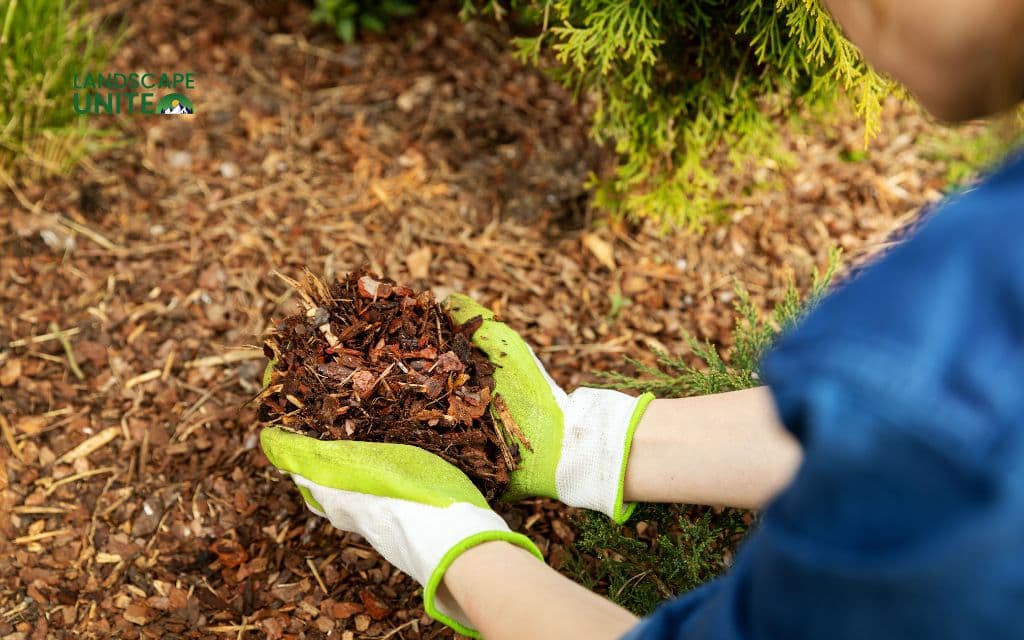
8. Implement supervised free-range periods
Release chickens for free-range time during periods when they’re less likely to cause garden damage, such as late afternoon when they’re naturally winding down for the day.
Morning hours often coincide with peak scratching behaviors.
Use treats and gentle redirection to encourage chickens to explore appropriate areas while discouraging flower bed visits. Scatter scratch grains or mealworms in designated areas to create positive associations with appropriate spaces.
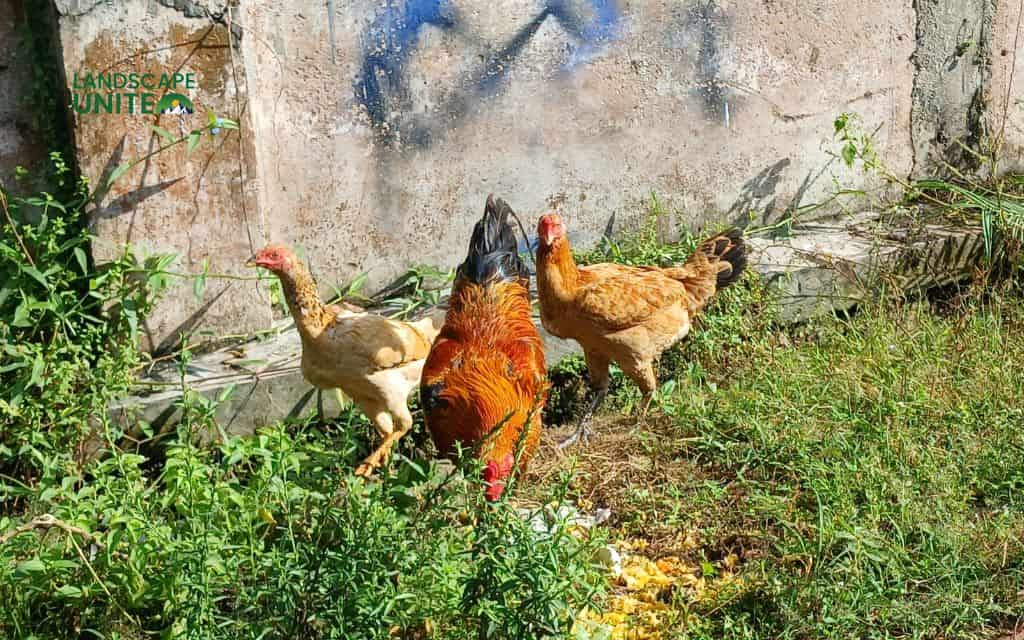
9. Use positive reinforcement training
Chickens are surprisingly intelligent and respond well to training that rewards desired behaviors.
- Begin by offering high-value treats when chickens stay in appropriate areas. Use a consistent sound or verbal cue when redirecting chickens away from flower beds, following immediately with rewards when they comply.
- Training requires daily consistency over several weeks to establish lasting behavioral changes. Some chickens learn faster than others, so maintain patience with slower learners while reinforcing success with quick learners.
- Combine training with environmental modifications like providing more appealing alternatives in appropriate areas. Chickens are more likely to respect boundaries when they have attractive options elsewhere.
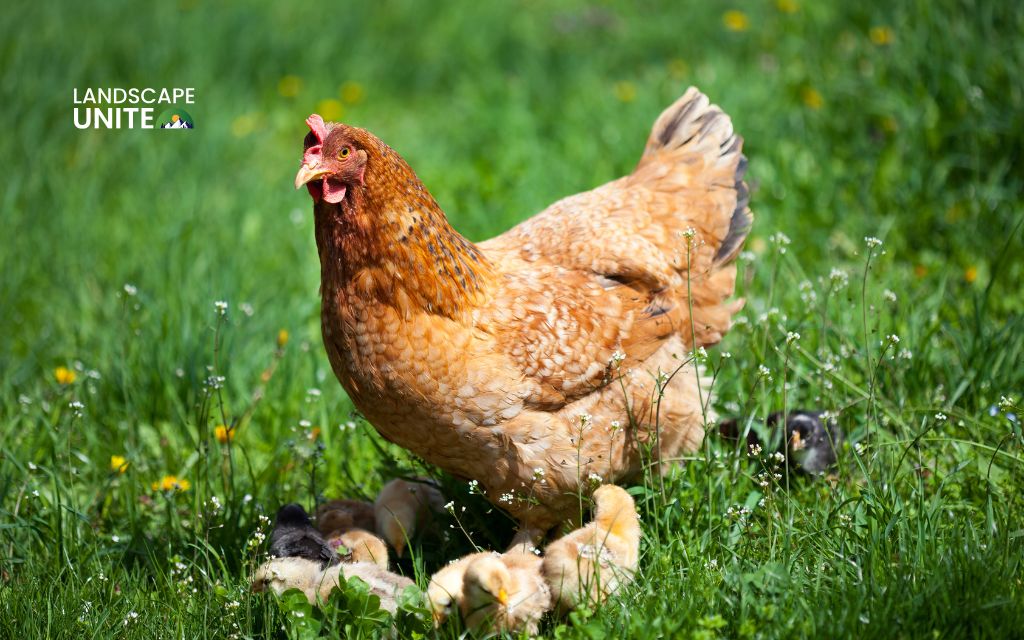
10. Decorate with purpose
Use garden art, trellises, and potted plants as functional barriers around flower beds. Statues, birdbaths, and decorative features create obstacles that chickens prefer to avoid.
Large potted plants can serve as moveable barriers, allowing you to adapt your defenses seasonally while maintaining attractive landscaping.
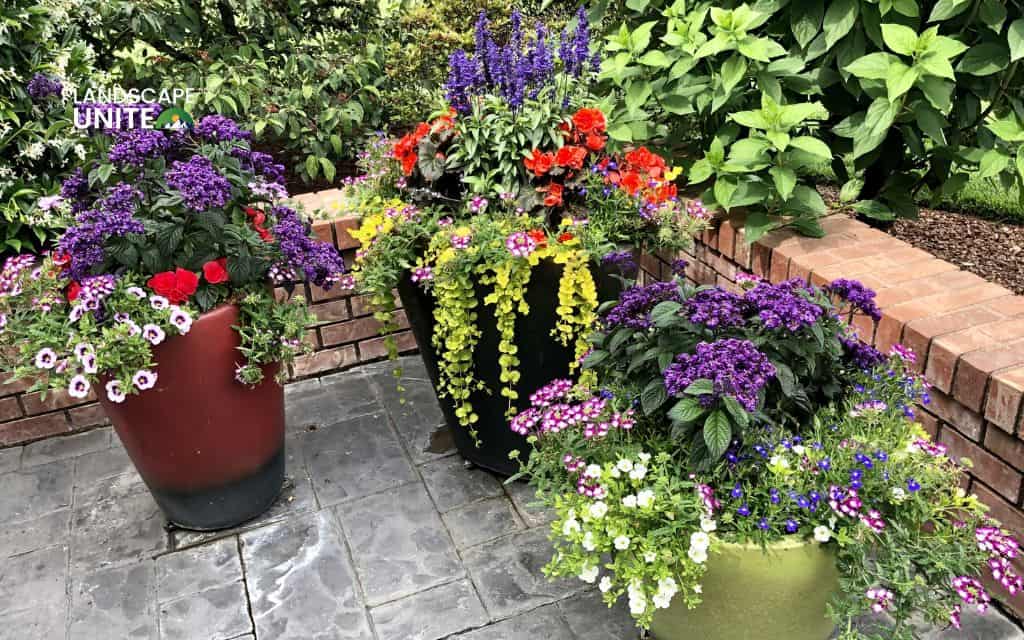
Why do chickens target flower beds?
To develop effective long-term solutions, it’s essential to understand the natural behaviors that drive chickens toward your carefully tended flower beds.
Natural foraging instincts
Chickens are hardwired to scratch and dig as part of their natural foraging behavior. In the wild, this scratching uncovers insects, seeds, and other food sources essential for survival. Your flower beds, with their loose, rich soil and regular watering, create ideal conditions that trigger these instinctive behaviors.
The soft, cultivated soil in flower beds is particularly appealing because it’s easy to work and often contains earthworms, grubs, and other protein sources that chickens naturally seek.
Additionally, the organic matter and compost often added to flower beds creates an environment rich in the small creatures that chickens consider delicacies.
Comfort and safety preferences
Flower beds often provide the combination of shelter and comfort that chickens seek for dust bathing, resting, and even egg-laying. The combination of plants for overhead protection and loose soil for ground contact makes these areas particularly attractive.
Chickens also appreciate the visual barriers that flower beds can provide, offering security from potential predators while allowing them to remain alert to their surroundings.
Dense plantings create the semi-enclosed spaces that chickens instinctively prefer for many of their daily activities.
Seasonal behavior variations
Understanding how chicken behavior changes throughout the year helps predict when flower bed protection is most critical. During spring months, chickens are naturally more active in their foraging as they prepare for egg-laying season and seek out fresh green vegetation.
Summer behaviors often focus on finding cool, shaded areas for dust bathing and resting, which may lead chickens to seek out the shelter provided by established flower beds.
Fall scratching behaviors intensify as chickens prepare for winter, often resulting in more aggressive digging and scratching activities.
Protecting plant health while accommodating chickens
Successful coexistence requires strategies that protect your plants’ health and growing conditions while acknowledging chickens’ natural needs and behaviors.
Plant selection strategies
Choose plants that are either naturally resistant to chicken damage or that chickens tend to avoid. Plants with strong scents, fuzzy or tough leaves, or thorny characteristics often remain untouched even in areas where chickens have access.
Consider incorporating chicken-resistant perennials like lavender, rosemary, sage, and ornamental grasses that can withstand occasional chicken encounters while providing beautiful garden displays.
These plants often become more established and resilient over time.
Soil protection methods
Maintain soil health in areas where chickens may have limited access by focusing on organic matter incorporation and proper drainage. Healthy soil produces stronger plants that can better withstand occasional chicken disturbances.
Use temporary protection methods during critical growing periods, such as when seeds are germinating or young transplants are establishing.
Removable covers or barriers can be used during vulnerable periods and removed once plants are established.
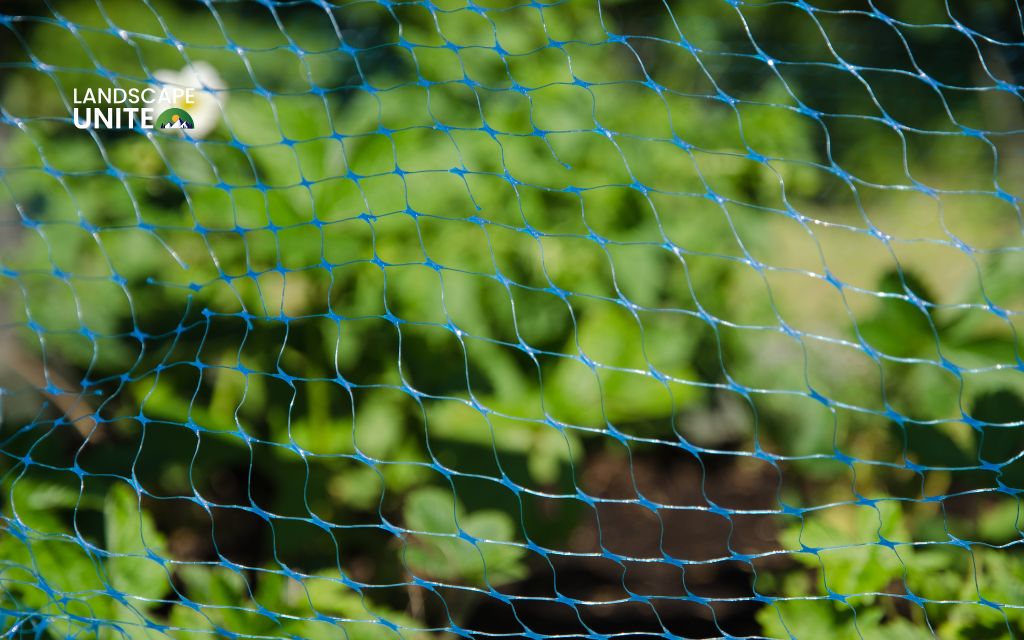
Conclusion
Remember that effective chicken management in garden settings is an ongoing process that may require adjustments as your flock grows, seasons change, and your garden evolves.
The investment in proper planning and implementation of these 8 strategies pays dividends in both garden beauty and chicken happiness.
Start with the quick solutions that address your most pressing concerns, then gradually implement longer-term strategies that create sustainable coexistence between your chickens and your flower beds.
For more gardening tips and landscape protection strategies, explore our comprehensive collection of gardening articles and expert resources available throughout our site.
Frequently asked questions (FAQs)
How do I stop chickens from scratching my flower beds?
The most effective approach combines physical barriers like low fencing or garden netting with natural deterrents such as citrus peels or coarse mulch. Creating alternative scratching areas with soft soil and scattered treats also helps redirect their natural behaviors away from flower beds.
What’s the best type of fencing to keep chickens out of my garden?
Chicken wire with 1-2 inch openings works well for most situations, installed 6 inches deep and 12-18 inches high. For aesthetic purposes, decorative garden fencing or attractive edging materials provide protection while enhancing your garden’s appearance.
Can I use natural repellents to keep chickens away from flower beds?
Yes, natural repellents are highly effective and environmentally safe. Citrus peels, dried herbs like rosemary and lavender, and homemade sprays containing garlic and hot peppers all work well. Reapply these repellents regularly, especially after rain.
How do I train my chickens to stay away from the garden?
Use positive reinforcement by offering treats when chickens stay in appropriate areas and gently redirecting them away from flower beds. Consistency over several weeks is essential, and providing attractive alternatives like designated scratching areas increases training success.
What plants can I put in my garden that chickens dislike?
Chickens typically avoid plants with strong scents, thorny textures, or fuzzy leaves. Good options include lavender, rosemary, sage, marigolds, ornamental grasses, roses, and barberry. These plants provide garden beauty while naturally deterring chicken visits.

